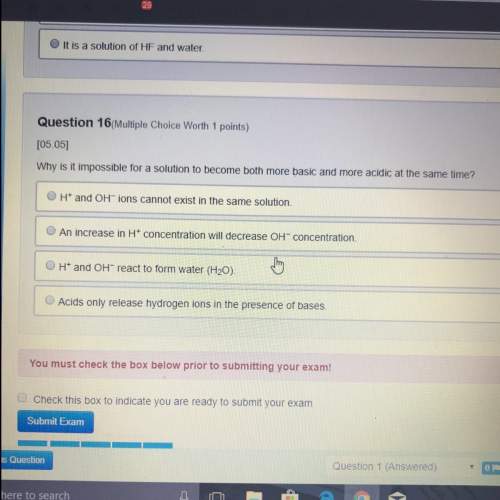
Chemistry, 28.10.2020 23:10 BigGirlsTheBest
A student placed a small amount of baking soda in a watch glass. When 15 drops of vinegar were added, the solution began fizzing. The watch glass was placed on a warm hot plate to
evaporate the liquid. The solid, white crystals remaining after evaporation were different in appearance than the baking soda.
Part A: Which observation most likely indicated that a chemical change had occurred?
Part B: Why were the remaining crystals in the watch glass different than the original baking soda crystals?

Answers: 1


Other questions on the subject: Chemistry

Chemistry, 22.06.2019 16:10, sierram298
Amixture initially contains a, b, and c in the following concentrations: [a] = 0.300 m , [b] = 1.05 m , and [c] = 0.550 m . the following reaction occurs and equilibrium is established: a+2b⇌c at equilibrium, [a] = 0.140 m and [c] = 0.710 m . calculate the value of the equilibrium constant, kc.
Answers: 1


Chemistry, 23.06.2019 04:31, 24swimdylanoh
What are the coefficients that will balance the skeleton equation below? n2 + h2 → nh3
Answers: 1

Chemistry, 23.06.2019 06:40, Science2019
How many joules of heat are required to raise thetemperature of 750 g of water from 11.0 °c to 19.0 °c?
Answers: 1
You know the right answer?
A student placed a small amount of baking soda in a watch glass. When 15 drops of vinegar were added...
Questions in other subjects:





Social Studies, 11.09.2021 14:00

English, 11.09.2021 14:00


World Languages, 11.09.2021 14:00

Mathematics, 11.09.2021 14:00




